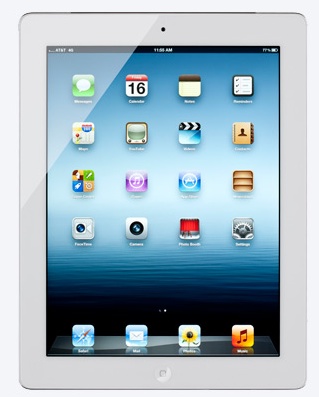Two years after creating the market, Apple remains the king of all media tablets, with its global market share rising to nearly 70% in the second quarter, putting the company on pace to reclaim much of the dominance it surrendered in 2011, reports iHS iSuppli (http://www.isuppli.com)
Apple during the second quarter shipped 17 million iPad 2 and new iPad media tablets, up a stunning 44.1% from 11.8 million the first quarter, according to the research group. This industry-leading increase in shipments translated into a market share gain of 11.5 percentage points, as Apple’s second-quarter global tablet share climbed to 69.6 percent, up from 58.1% in the first quarter.
This marks a five-quarter high for Apple’s media tablet market share. The last time Apple accounted for such a large portion of the media tablet was the first quarter of 2011, when it had a 70.0 percent share.
“Apple is making all the right moves to rebuild its dominant position in the tablet space,” says Rhoda Alexander, director, tablet and monitor research for IHS. “The company is pushing visual performance boundaries with the new iPad, while providing value customers with a lower-priced alternative, the iPad 2. With the expected entrance of the 7-inch version of the iPad in September, Apple is sending a clear message that it plans to dominate this market over the long term. Apple’s major media tablet rivals, Google Inc. and Microsoft Corp., hope to challenge Apple in the second half of the year, but will be facing formidable headwinds with no sign that the market leader is backing off of its aggressive strategy in the market.”
In July of this year, Apple exceeded the 85 million mark for iPad media tablets sold since the product’s launch in April of 2010.
IHS iSuppli media tablet consumer research shows that satisfied users are likely to go back to the same brand for their next purchase. In all likelihood, Apple already has developed a solid future customer base, which will continue to strengthen barring a major stumble on an upcoming product release.
In contrast, Samsung, Apple’s closest competitor, has shipped almost 13 million total media tablets. Samsung was one of the first to enter the market after Apple, introducing its first Galaxy Tab in the fourth quarter of 2010. However, Samsung hasn’t yet achieved the cumulative unit sales that Apple reached by Christmas of 2010.
According to iHS iSuppli, one difficulty for players other than Apple has been in establishing a clear brand identity in the media tablet market. Without a distinctive brand identity, competitors are forced to battle on price, robbing them of the profit margin that fuels future product and ecosystem development. Google’s entry-level US$199 price point exacerbates the price pressure across the Android tablet universe, just as Amazon’s entry did in the fourth quarter of 2012. It remains to be seen at what price point Microsoft will enter.
“Tablets are becoming an increasingly important piece of the consumer electronics space,” Alexander notes. “Vendors must understand that customers are not buying hardware, but that they are buying an experience. Users then want to carry that experience across multiple devices, creating an opening for the savvy vendor into a much larger sales opportunity than a single tablet.”
Apple, Microsoft and Google are all keyed in to this much larger user experience. To date, the media tablet for the most part has been a consumer phenomenon, but the next big battle will be fought in the business space, according to iHS iSuppli.

